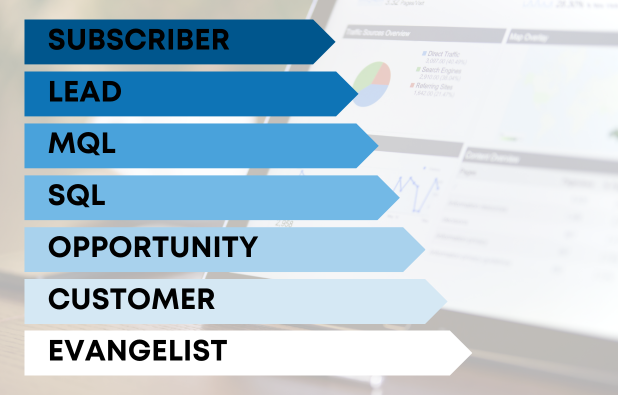4 Ways to Increase Your Marketing Efforts
Marketing is one of those fields that’s always changing, because best practices and consumer behavior is always changing, and companies are always...
6 min read
Inbound 281
February 17, 2023 8:54:56 AM EST
![The Four Parts of a SWOT Analysis [With Template & Examples]](https://web.inbound281.com/hubfs/2022%20Inbound%20281%20Website/2023%20Blog/Inbound%20Blog%20Images%20(5).png)
A SWOT analysis is part of a strategic planning process that companies use to assess their strengths, weaknesses, opportunities, and threats. A SWOT analysis can be a helpful technique for businesses to utilize when evaluating their business strategy or plan of action.
In this blog article, we cover essential aspects of a SWOT analysis, including how to use a SWOT analysis (including a free template for you to use), the importance of a SWOT analysis, the limitations of a SWOT analysis, real-world examples, and a deeper dive into the four parts of a SWOT analysis.
The four parts of a SWOT analysis are:
Strengths: These are the internal factors that give a company an advantage over its competitors—a talented team, strong brand, financial resources, valuable reputation, etc.
Weaknesses: These are the internal factors that put a company at a disadvantage relative to its competitors—lack of competitive advantage, under-resourced departments, a lack of brand recognition, limited budget, etc.
Opportunities: These are the external factors that present a company with the opportunity to grow and improve its performance—new markets, technology, emerging trends, regulations, etc.
Threats: These are the external factors that present a company with the risk of decline or failure—Competition, economic uncertainty, changing customer preferences and needs, etc.
.png?width=225&height=216&name=Your%20Logo%20Here%20(2).png)
A SWOT analysis provides an organization with a clear understanding of its current business situation using the information gathered from each of the four parts of a SWOT analysis: Strengths, Weaknesses, Opportunities, and Threats. Based on the SWOT analysis, companies can use the collected data to influence business decisions and develop an achievable plan for growth and success.
You can apply a SWOT analysis to any situation or subject where an individual or organization is looking to maximize business opportunities while also being aware of factors that may hinder its success.
A SWOT analysis is beneficial in a variety of situations, including:
When conducting a SWOT analysis for a company, you will need to evaluate the internal and external factors contributing to your overall results.
1). Download Our Interactive SWOT Analysis Template
We have created an editable version of our template that you can use for yourself or as inspiration when conducting your own analysis. You can organize your research, upload your company logo, and customize the elements and design to make it your own.

2). Identify your objectives
Before you compile data from all of the ins and outs of your research, narrow in on your objectives. A SWOT analysis should be specific enough so that you can create an impactful strategy that will help you reach your desired goal.
For example, your analysis may evaluate specific content promotion ideas or social media channels if you are creating a social media program. Another example is if you are looking to introduce a new product to the market, you may want to focus on the competitive landscape you are introducing the new product into.
3). Identify Each of the Four Parts of Your SWOT Analysis
Strengths: Strengths refer to the positive internal factors that contribute to the success of a business or project. To identify a company's strengths, consider your business's resources, skills, and capabilities and how to leverage them to succeed.
Weaknesses: Weaknesses refer to the negative internal factors that hinder the success of a business or project. When identifying your weaknesses, consider areas where your business is lacking or where there are limitations that could impact success.
Opportunities: Opportunities refer to external factors that companies can leverage to achieve success. To identify opportunities, look at the market environment and consider areas where there is untapped demand or new technologies or trends that could offer a competitive advantage.
Threats: Threats refer to external factors that pose a challenge or risk to the success of a business or project. It's helpful to consider the competitive environment and look for changes in regulations, economic conditions, or customer preferences that could impact your business when identifying a business's threats.
A SWOT analysis can provide numerous benefits for a business. Each of the four parts of a SWOT analysis can provide valuable insights that can help companies achieve their goals and succeed in a competitive market. A SWOT analysis helps companies stay informed, make informed decisions, and continuously improve their marketing efforts.
Better Understanding of the Business Environment: A SWOT analysis helps companies understand their internal and external environments.
Improved Strategic Planning: By identifying its strengths, weaknesses, opportunities, and threats, a company can prioritize its efforts and allocate resources more effectively.
Enhanced Competitiveness: A SWOT analysis helps companies identify areas for improvement and develop strategies to stay ahead of the competition.
Increased Collaboration and Communication: A SWOT analysis can be a valuable tool to help team members understand business goals better and work together more effectively.
Facilitation of Change Management: A SWOT analysis can help companies identify areas for improvement and prioritize changes.
Although a SWOT analysis can be a helpful tool for businesses, it does have limitations. If you are looking to do a SWOT analysis, keep these limitations in mind.
Subjectivity: A SWOT analysis is often subjective, as it relies on the interpretation and opinions of the individual or team conducting the analysis. If the person conducting the analysis is not objective, the results may not be accurate.
Limited Information: A SWOT analysis only considers internal and external factors directly related to the subject of the analysis. Important information may be overlooked, leading to an incomplete or inaccurate understanding of the situation.
Lack of Action Plan: A SWOT analysis provides a snapshot of a company's situation, but it lacks a comprehensive action plan for how to address identified strengths, weaknesses, opportunities, and threats. Organizations must evaluate the SWOT analysis and create a strategic plan accordingly.
Lack of Integration with Other Planning Tools: Companies should integrate a SWOT analysis with other strategic planning tools, such as a competitive or market analysis, to better understand the business environment.
There are numerous examples of successful companies that have used SWOT analysis when developing their business strategies. The examples that we will explore today are from top technology companies you likely know very well.
.webp?width=481&height=361&name=2%20(2).webp)
The company has many strengths that position the company where it is today, including;
Being a globally iconic brand
Supplying top technology across products and services
Continuing to expand its service offerings
Apple is one of the world's most well-known and successful companies and is recognized for its innovation and design. The Apple brand's unique logo and aesthetic design are widely recognized, leaving no doubt that Apple is a globally iconic brand, serving consumers the top technology year after year. The company continues using cutting-edge technology to expand its product/service offerings for devices, streaming services, financial services, and more.
Even the top companies have weaknesses; here are some of Apple's weaknesses.
High-priced "luxury" products
Incompatibility with other software programs
Expanding its offerings into areas of non-competency
Apple products are often considered luxury products because of the high price tags that come with purchasing an Apple product. Low-income consumers are usually eliminated from Apple's consumer pool. A significant weakness consumers see in Apple is that Apple products are incompatible with other software, requiring customers to continue to purchase Apple apps, products, and accessories exclusively.
Additionally, as great as it is that Apple is expanding its product/services, the company is also entering into new areas that they have less competency in, such as video streaming services, payment services, etc., and is competing with top brands such as Netflix, Hulu, and PayPal.
Next, let's look at some of Apple's opportunities.
Consistent Customer Growth
Utilize Artificial Intelligence
Expand Smart Technology
As a fast-growing company, Apple has significant opportunities for customer growth. There is a substantial opportunity for Apple to continue growing its customer base in terms of new and retaining existing customers.
As a top tech company, Apple will likely continue to keep up with technology trends and advances. Artificial intelligence and Smart technology are two advancing technologies companies are capitalizing on today. With smart wearable technology, music streaming services, and even smart home technology, Apple has ample market opportunities to offer customers a better user experience.
Lastly, let's look at the threats that the company faces.
Increasing Competition
Counterfeit Products
Lawsuits Against Apple
Apple is a top-performing brand, but the company still faces the threat of competitors. Other major brands, such as Samsung and Google, are gaining more significant footholds in the industry.
Counterfeit products have also impacted Apple. Individuals or companies are illegally producing counterfeit products using Apple's brand image and name. These counterfeit products can mislead customers and dilute the value of Apple's brand by having dysfunctional and unreliable products.
Lawsuits threaten any company, and Apple is no stranger to them. As a service provider with access to personal information and financial data, the company operates in a highly regulated industry where these accusations are not taken lightly.
Now that we have walked through an example of what a SWOT analysis should look like and the breakdown of each of the four parts of a SWOT analysis, let's look at another example.
Here is a SWOT Analysis for Microsoft..webp?width=496&height=372&name=3%20(2).webp)
Even Netflix, one of the most popular Saas companies, can benefit from a SWOT analysis. Let's look at what a SWOT analysis for Netflix may look like.
Here is a SWOT analysis for Netflix.
.webp?width=496&height=372&name=4%20(3).webp)
The four parts of a SWOT analysis are strengths, weaknesses, opportunities, and threats, and it is a helpful tool for businesses of all industries. Using a SWOT analysis to identify internal and external factors, companies can rethink their marketing strategy and begin capitalizing on optimal opportunities while being aware of potential threats.
If you need help, contact us at 800-834-4910 or get in touch with an Inbound 281 blogging expert.

Marketing is one of those fields that’s always changing, because best practices and consumer behavior is always changing, and companies are always...

HubSpot Lifecycle Stages play a crucial role in managing your contacts and optimizing your marketing strategies. By diving into this guide, you'll...

QR Code Essentials: What is a QR code? A QR Code (Quick Response Code) is a 2-dimensional barcode. When read by a QR code reader on a smartphone,...